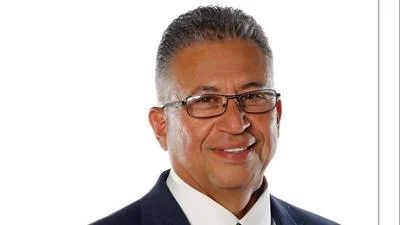In the battle of the budget, Gov. Michelle Lujan Grisham continues in a tug-of-war with the New Mexico legislature over who has the power to spend federal relief funds—specifically, the unallocated funds from the American Rescue Plan Act—and what they should be spent on.
One economist says the latter dilemma isn't cut and dried, but there are good guiding principles to go by.
Lujan Grisham's legal counsel is arguing precedent gives the governor sole power to spend the $1.7 billion in federal relief funds at her discretion. Part of the argument rests in the fact that the funds are not in the state treasury, and therefore not subject to appropriation by the legislature, the Albuquerque Journal reported back in October.
But recently, two New Mexico lawmakers have filed a petition with the Supreme Court to keep Gov. Lujan Grisham from spending almost $1 billion of the federal relief funds. Senate GOP floor leader Greg Baca of Belen and Sen. Jacob Candelaria, D-Albuquerque—both attorneys—have come together over the issue calling it a “constitutional emergency of generational importance.” The state’s treasurer, Tim Eichenberg, has also joined with the lawmakers in a recent court filing.
President Joe Biden signed ARPA into law in March. In June, Lujan Grisham announced that her administration was targeting more than $656 million of the stimulus funds toward New Mexico’s almost-empty unemployment fund. The governor has also earmarked $10 million in financial incentives aimed at the COVID-19 vaccine, $5 million in supplemental pay bonuses for chile field workers, and another $5 million in incentives geared at encouraging those living on unemployment to return to the workforce, according to the Albuquerque Journal.
Notably, Lujan Grisham used her line-item veto power to veto the legislature's proposal to earmark part of the stimulus package for a college scholarship program, unemployment insurance funds, highway repairs, and other uses in April.
So, who is right? How should they be spent?
Jonathan Williams, chief economist and executive vice president of Policy at the American Legislative Exchange Council (ALEC), a large nonpartisan organization comprised of state legislators, detailed what he believes states should be spending the pandemic relief funds on to the New Mexico Sun. He works with "state policymakers, congressional leaders and members of the private sector to develop fiscal policy solutions for the states," according to ALEC's website.
While the interaction between state and federal governments "can be very tricky," Williams said ALEC's three guiding principles are free markets, limited government and federalism.
Williams said states and local officials who are overseeing the funds, "forget about the costs that come with the funds in terms of restrictions, maintenance of effort, requirements, et cetera, that oftentimes far outlive the timeframe of the federal dollars."
"...There's a lot of money sitting in state bank accounts right now, and a lot of people forget that Congress actually had to come in at the end of 2020 to extend the ability of states to be able to continue to spend CARES Act dollars because CARES Act dollars were still sitting unused in their bank accounts in many cases," Williams said. "Then, ARPA added hundreds of billions more to the states and local coffers as part of that.
"Then, of course, you have the natural rebound in the economy, especially in the states that are seeing really low historic unemployment rates of two or three percent. And to take up the post-COVID lockdowns, the other natural revenue growth right now is in a way, you have a perfect scenario for a kind of padded state budgets, and that obviously has a lot of policy implications for our members," Williams said.
ALEC put out a statement on the best principles for states to use when determining how to spend the pandemic relief funds.
Williams said he remembers the stimulus package of 2009 passed under the Obama Administration.
"...One of the key lessons learned was if these are one-time federal dollars, they should use them for one-time expenses," Williams said, and the pandemic relief funds should not be used to "pad ongoing expenses" or "something that state taxpayers will be on the hook for going forward. Since we know it's very clear that these are temporary federal support dollars, states should not use them to really enhance their baseline spending..."
As for New Mexico using the funds to shore up their unemployment insurance fund, Williams said, Congress put out guidance on what the funds could be used for. "And one was to backfill the Unemployment Insurance Trust Fund."
"I think anything that could be done to avoid future tax increases on the business community in New Mexico is a positive step. And ... for governors across the country, we've been advising it's certainly a best practice now that they have the clear flexibility to use the federal funds to backfill unemployment insurance trust funds," Williams said.
According to Williams, the one-time pandemic funds should be used for projects such as infrastructure.
"And I do think like outside of, let's say, building up some one-time infrastructure spending for states and maybe enhancing cybersecurity budgets with just the increase in hacking and the fraud that we saw..., the states as it relates to the unemployment insurance trust funds. I think a really positive element would be for states to backfill...[and] pay off any loans from... the federal government on UI systems. But also, if they're in any kind of a deficit scenario to be able to use the ARPA funds to backfill and make sure they're held harmless," Williams said.
"And so I think that's a smart play for states to use any remaining federal balances to replenish unemployment insurance trust funds. And then, you know, another thing that Congress has laid out was, I should say, Treasury laid out in its guidance was states can use the federal ARPA dollars to conform to changes in the federal tax code," Williams said.
He explained that Arizona this year, for instance, used some of its federal support money to "conform to federal provisions that give businesses more flexibility to claim net operating losses.
"That was something that was a federal change that not all states automatically conform to. And so if there was a cost to the state in this case, would be a net operating loss provision to the Treasury. And Congress has given the states the ability to use federal dollars to pay those losses in revenue from conforming to the federal code," Williams explained. "I know it's a bit of a wonky area of policy, but I think it's an important distinction that in the way Congress and Treasury almost contradicted each other there because Congress had said they can't use these federal dollars to cut taxes. But then the Treasury guidance (came) out after it was passed, they clarified that to say, well, yes, you can actually use this to conform to federal tax policy changes, that you can use it to backfill your unemployment insurance trust fund in order to avoid tax increases."
New Mexico and other states using the pandemic funds to fill their pension funds has been the object of debate.
"Well, this is a tricky area, this one (has) quite a bit of debate in Congress as they were debating both CARES Act and ARPA ... certainly New Mexico has a massive problem with its unfunded pension liabilities ... It is one of the biggest problems, I think, at the state level from a policy perspective," he said.
"And so on one hand, I think you have a lot of folks saying, well, this would be a good use to back and top off pension liabilities with these federal dollars. However, then the other side of that, though, is that it gives states the incentive to potentially (underfund) their pension systems or to make bad promises for pension systems going forward if they can rely on future federal support to just cover their mistakes when it comes to policy development. So there are two sides of that coin when it comes to that scenario around pension funds," Williams explained.
He added that Congress had not been clear on whether using the federal funds to backfill pensions was allowed.
Williams' other qualifications include starting ALEC's Center for State Fiscal Reform in 2011. He co-authors "Rich States, Poor States: ALEC-Laffer Economic State Competitiveness Index" alongside Dr. Arthur Laffer and Stephen Moore.
"...Over the years, I've been in all of the 50 states working with our members on solving for best practices around economic policy issues and so know the debate was very much in the wheelhouse (of) our members and their interests when it comes to how these federal funds were disbursed and some of the best practices around that," Williams said.








